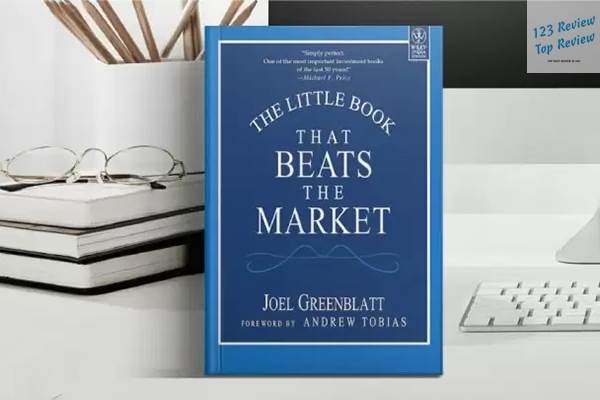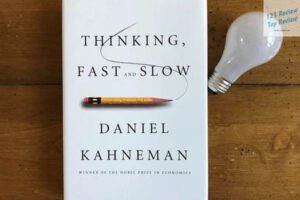First published in 2005 and updated in subsequent years, “The Little Book That Still Beats the Marke” presents a strategy known as the “Magic Formula.” This formula offers a systematic approach to identifying undervalued stocks that can potentially outperform the market. Greenblatt’s approach is deeply rooted in the principles of value investing and has gained a loyal following among both novice and experienced investors.
In this article, we will explore the key investment principles outlined in the book, delve into the workings of the Magic Formula, examine its historical performance, and consider its practical implementation.
Key Investment Principles
Value Investing Fundamentals
At the heart of “The Little Book That Still Beats the Market” lies the concept of value investing. Value investing is an investment strategy that involves buying stocks that appear to be undervalued by the market. The basic idea is to purchase these stocks at a discount to their intrinsic value and hold onto them until the market recognizes their true worth. This approach contrasts with growth investing, where investors seek out companies with high growth potential, often paying a premium for such stocks.

Greenblatt’s book builds on the legacy of value investing pioneers like Benjamin Graham and Warren Buffett. He emphasizes the importance of buying good companies at bargain prices and holding them for the long term. The Magic Formula is Greenblatt’s unique twist on value investing, offering a systematic and formulaic way to identify undervalued opportunities in the stock market.
Joel Greenblatt’s Background
Joel Greenblatt is a highly respected figure in the investment world. He is the founder of Gotham Capital, a hedge fund that achieved extraordinary returns under his management. Greenblatt is also a professor at Columbia Business School, where he shares his expertise with aspiring investors. His extensive experience and deep understanding of the stock market lend significant credibility to the strategies outlined in “The Little Book That Still Beats the Market.”
Greenblatt’s success as an investor and educator is reflected in the simplicity and accessibility of his writing. “The Little Book That Still Beats the Market” distills complex investment concepts into easy-to-understand language, making it accessible to a broad audience. Greenblatt’s background and achievements provide a strong foundation for the strategies he advocates in the book.
The Magic Formula
Understanding Earnings Yield
One of the key components of the Magic Formula is the concept of earnings yield. Earnings yield is a financial metric used to assess how much return an investor can expect from a company’s earnings relative to its valuation. It is calculated by taking a company’s earnings before interest and taxes (EBIT) and dividing it by the enterprise value (EV). The enterprise value includes the company’s market capitalization, debt, and cash, providing a more comprehensive view of the company’s valuation than market capitalization alone.
A higher earnings yield indicates a more attractive investment opportunity, as it suggests that the company is generating significant earnings relative to its valuation. In essence, the earnings yield is the inverse of the price-to-earnings (P/E) ratio, a commonly used valuation metric. By focusing on companies with high earnings yields, Greenblatt’s Magic Formula seeks to identify stocks that are undervalued by the market.
Understanding Return on Capital
The second critical component of the Magic Formula is the return on capital (ROC). ROC measures how efficiently a company is using its capital to generate profits. It is calculated by dividing EBIT by the sum of net working capital and net fixed assets. Net working capital includes current assets minus current liabilities, while net fixed assets represent the company’s long-term investments in property, plant, and equipment.
A high return on capital indicates that a company is effectively using its resources to generate profits. Companies with high ROC are generally more profitable and have a competitive advantage in their respective industries. By emphasizing return on capital, the Magic Formula aims to identify companies that are not only undervalued but also efficient in their operations.
Combining Metrics for Stock Evaluation
The Magic Formula combines the earnings yield and return on capital metrics to rank companies. By focusing on stocks that score highly on both metrics, the formula seeks to identify businesses that offer the best potential for market-beating returns. The logic behind this combination is straightforward: companies with high earnings yields are likely undervalued, while those with high returns on capital are efficiently managed and profitable.
To apply the Magic Formula, investors begin by screening for companies that meet the criteria of high earnings yield and high return on capital. These companies are then ranked from best to worst based on their combined scores. The goal is to create a portfolio of the top-ranked stocks, which are expected to outperform the broader market over time.
Practical Implementation
Step-by-Step Guide to the Magic Formula
Implementing the Magic Formula is relatively straightforward, making it accessible to investors of all experience levels. The first step is to gather the necessary financial data for a wide range of companies. This data can be obtained from financial databases, stock screening tools, or company financial statements. The two key metrics to focus on are earnings yield and return on capital.
Once the financial data is collected, the next step is to calculate the earnings yield and return on capital for each company. These metrics are then used to rank the companies, with those scoring highest on both metrics considered the most attractive investment opportunities. The Magic Formula suggests building a diversified portfolio by purchasing shares of the top-ranked companies.
Investors are encouraged to hold each stock for one year before reassessing the portfolio. At the end of the year, the portfolio is rebalanced by selling stocks that no longer meet the criteria and replacing them with new top-ranked companies. This process is repeated annually, allowing the portfolio to benefit from the compounding effects of long-term investment.
Ranking Companies Effectively
Effective company ranking is crucial to the success of the Magic Formula. To rank companies accurately, it is essential to use reliable financial data and to ensure that the calculations for earnings yield and return on capital are consistent across all companies. Investors should also be mindful of any anomalies in the data, such as one-time earnings or non-recurring expenses, which could distort the metrics.
The Magic Formula works best when applied to a broad universe of companies, including those from various industries. This diversification helps to manage risk by reducing exposure to any single sector or company. Additionally, it is important to exclude certain types of companies from the ranking process, such as financial firms, utilities, and companies with significant negative earnings, as the Magic Formula may not be as effective in these cases.
Long-term Investment Strategy
Greenblatt emphasizes that the Magic Formula is a long-term investment strategy. It is not designed for short-term trading or speculation. Instead, the formula requires patience and discipline, as it may take several years for the full benefits to materialize. The power of the Magic Formula lies in its ability to compound returns over time, making it a suitable strategy for investors with a long-term horizon.
Investors should be prepared for periods of underperformance, as no investment strategy is immune to market fluctuations. However, those who remain committed to the Magic Formula and resist the temptation to deviate from the strategy are more likely to achieve favorable results over the long run. Greenblatt himself advocates sticking with the formula through both good times and bad, trusting in its ability to deliver superior returns over time.
Historical Performance
Track Record of the Magic Formula
Since its introduction, the Magic Formula has demonstrated impressive historical performance. Backtests and real-world applications have shown that the formula often outperforms market averages, delivering substantial returns to investors who adhere to its principles. For example, during the backtesting phase described in Greenblatt’s book, the Magic Formula consistently beat the market by a significant margin over a 17-year period.
This outperformance is attributed to the formula’s focus on undervalued, high-quality companies that are well-positioned for future growth. By investing in companies with both high earnings yields and high returns on capital, the Magic Formula captures the best of both worlds: value and quality. However, it is important to note that past performance does not guarantee future results, and market conditions can impact outcomes.
Comparative Analysis with Market Averages
When compared to market averages, such as the S&P 500, the Magic Formula has historically outperformed over extended periods. This outperformance is particularly notable during market downturns, when the formula’s focus on undervalued stocks with strong fundamentals provides a cushion against market volatility. Conversely, during speculative bubbles or periods of irrational exuberance, the formula may underperform as investors flock to high-growth, high-risk stocks.
Over the long term, the Magic Formula’s ability to identify and invest in high-quality companies at attractive valuations has proven to be a winning strategy. However, it is essential for investors to maintain a long-term perspective and to understand that short-term underperformance is possible. The true strength of the Magic Formula lies in its consistent application over many years, allowing the compounding effect of superior returns to take hold.
Challenges and Considerations
Potential Drawbacks of the Magic Formula
While the Magic Formula has many strengths, it is not without its drawbacks. One potential issue is that the formula does not account for qualitative factors, such as management quality, competitive advantages, or industry trends. For example, a company may have a high earnings yield and return on capital, but if it is facing significant industry headwinds or has poor management, its stock may still underperform.
Additionally, the Magic Formula may lead to the selection of companies with low growth potential or those facing structural challenges. For instance, a company with a high return on capital may be operating in a mature industry with limited opportunities for expansion. As a result, investors must conduct additional research to complement the formula’s findings and to ensure that the companies they invest in are truly sound investments.
Another consideration is the potential for value traps. A value trap occurs when a stock appears undervalued based on traditional metrics but continues to decline in price due to underlying business problems. The Magic Formula may inadvertently select value traps, as it relies heavily on quantitative metrics without considering the broader context in which a company operates.
Importance of Patience in Investing
Patience is a critical component of success when using the Magic Formula. The strategy may experience periods of underperformance, particularly during market bubbles or speculative frenzies. During such times, investors may be tempted to abandon the formula in favor of more aggressive strategies. However, Greenblatt emphasizes the importance of staying the course and trusting in the formula’s long-term potential.
Investors who lack patience may find it challenging to stick with the Magic Formula, especially when short-term results are disappointing. However, those who remain committed to the strategy and maintain a long-term perspective are more likely to achieve favorable outcomes. The Magic Formula is designed to reward patience and discipline, with the greatest rewards accruing to those who are willing to wait for the market to recognize the value of their investments.
Reader Reception and Critique
Reviews and Testimonials
“The Little Book That Still Beats the Market” has received widespread acclaim from investors, financial professionals, and academics. Readers often praise the book for its simplicity, clarity, and effectiveness. The Magic Formula is frequently lauded for its ability to demystify the stock market and provide a straightforward, actionable investment strategy.
Many testimonials highlight how the book has helped readers improve their investment approach and achieve better returns. Novice investors, in particular, appreciate the book’s accessibility and the step-by-step guidance it provides. For more experienced investors, the Magic Formula offers a useful framework for identifying undervalued stocks and constructing a diversified portfolio.
The book has also been praised for its engaging writing style, with Greenblatt using humor and real-world examples to illustrate key concepts. This approach makes the book not only informative but also enjoyable to read, which has contributed to its popularity among a broad audience.
Critical Perspectives on the Book
Despite its popularity, “The Little Book That Still Beats the Market” has also faced criticism. Some critics argue that the Magic Formula oversimplifies the complexities of investing and may not be suitable for all market conditions. For example, the formula’s reliance on historical data and quantitative metrics may not account for changing market dynamics or shifts in investor sentiment.
Others contend that the Magic Formula’s focus on earnings yield and return on capital may lead to the exclusion of high-growth companies that could offer substantial returns in the future. Additionally, some investors may find that the formula’s one-size-fits-all approach does not align with their specific investment goals or risk tolerance.
These critiques underscore the importance of understanding the limitations of any investment strategy. While the Magic Formula can be a powerful tool for identifying undervalued stocks, it is not a panacea. Investors should consider the formula as part of a broader investment strategy and be prepared to supplement it with additional research and analysis.
Conclusion on Investment Strategies
Overall Effectiveness of the Magic Formula
In conclusion, “The Little Book That Still Beats the Market” offers a compelling and accessible investment strategy through the Magic Formula. The formula’s focus on earnings yield and return on capital provides a solid foundation for identifying undervalued stocks with strong growth potential. While the Magic Formula is not without its challenges, it has proven effective over time, particularly for those who adhere to its principles and maintain a long-term perspective.
The Magic Formula’s success lies in its simplicity and its ability to distill complex investment concepts into actionable steps. By combining value investing principles with a systematic approach to stock selection, the Magic Formula offers investors a clear path to achieving superior returns. However, it is essential for investors to remain patient, disciplined, and committed to the strategy, even in the face of short-term challenges.
Recommendations for Aspiring Investors
For aspiring investors, “The Little Book That Still Beats the Market” provides an excellent introduction to value investing and the Magic Formula. The book’s straightforward approach and practical guidance make it a valuable resource for those looking to build a solid foundation in investing. However, it is important to complement the Magic Formula with thorough research, an understanding of market conditions, and a long-term investment horizon.
Investors should also be aware of the potential drawbacks of the Magic Formula and be prepared to adjust their strategy as needed. While the formula can be a powerful tool for identifying undervalued stocks, it is not a substitute for careful analysis and due diligence. By combining the Magic Formula with a well-rounded investment strategy, aspiring investors can increase their chances of achieving long-term success in the stock market.





